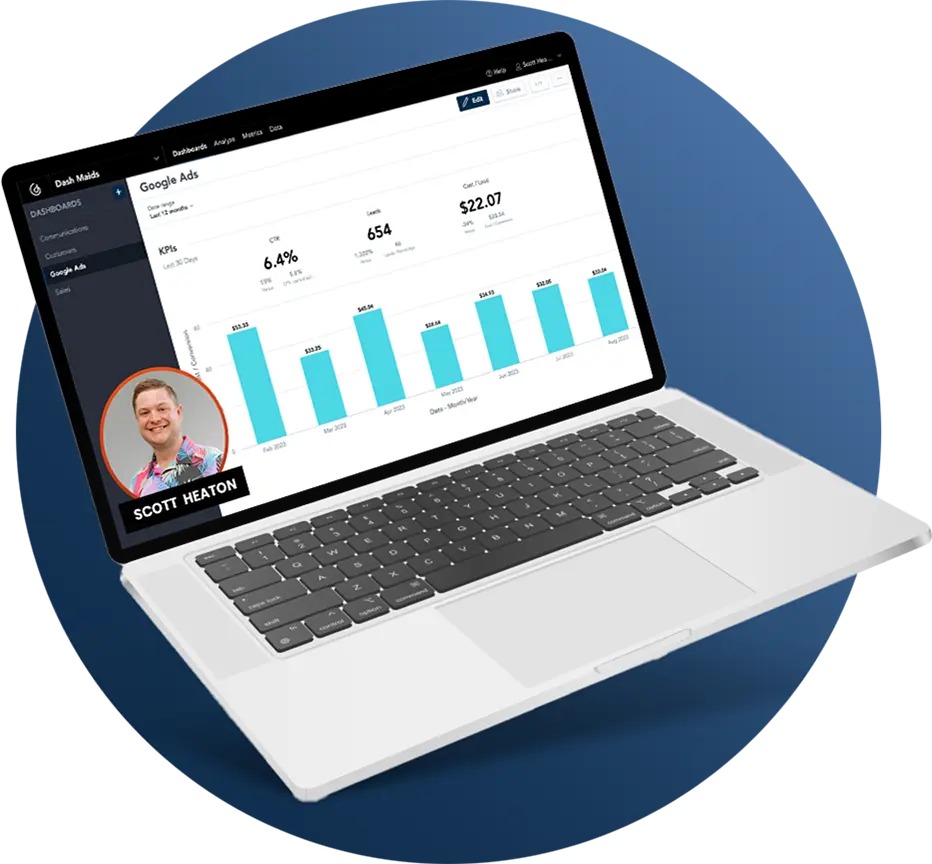Combining Google and Meta for Effective Digital Marketing for Small Businesses
👇 Jump to videoIn today's digital age, digital marketing for small businesses is more crucial than ever. As a small business owner, you may wonder how to maximize your marketing efforts and achieve a high return on investment (ROI). One powerful approach is to use Google and Meta (Facebook and Instagram) in tandem to grow your service business. This strategy focuses on targeting potential customers who have shown interest in your services and nurturing them until they become paying clients. Let's explore how this approach works and how it can benefit your business.
Understanding the Power of Google
Google: The Intent Engine of the Internet
Google is known as the "intent engine" of the internet because users typically search for solutions to their problems. When someone searches for a service you offer, whether through organic results, map pack listings, or Google ads, they're expressing intent. They actively seek what your business provides, making Google a prime platform for attracting potential customers.
How Google Works for Your Business:- Organic Results: Appearing in organic search results enhances your business's credibility and visibility. By optimizing your website's SEO, you can improve your organic rankings and attract more visitors
- Map Pack Listings: These are local business listings that appear on Google Maps and search results. Ensuring your business is included in the map pack can drive local traffic and improve your chances of being chosen by nearby customers
- Google Ads: Paid advertising on Google allows you to target specific keywords and demographics, ensuring your ads reach potential customers actively searching for your services
The 20% Conversion Dream
In an ideal scenario, 20% of the visitors who land on your website via Google will convert by either calling your business or filling out a contact form. However, this leaves 80% of potential customers who leave your site without taking any action. These visitors are valuable leads that shouldn't be overlooked, as they have already shown interest in your services.
Utilizing Meta (Facebook and Instagram) for Retargeting
Retargeting: Capturing the 80%
Retargeting is a strategy used to re-engage the 80% of visitors who leave your website without converting. By using tracking codes, you can match these visitors with users on Meta platforms like Facebook and Instagram. Here’s how retargeting works and how it can enhance your digital marketing strategy:
Step-by-Step Retargeting Process:- Install Tracking Codes: Add tracking codes (such as Facebook Pixel) to your website to gather data on visitors who didn't convert
- Create Custom Audiences: Use the data collected to create custom audiences on Facebook and Instagram, targeting users who have previously visited your website
- Design Engaging Ads: Develop ads that encourage these potential customers to return to your website. These ads can include special offers, testimonials, success stories, or compelling reasons to choose your business over competitors
- Lead Generation and Website Visits: Use retargeting ads to capture leads directly on Meta platforms or drive traffic back to your website, where users can complete a contact form or make a purchase
The Benefits of Retargeting
- Increased Conversion Rates: Retargeting helps recapture the interest of potential customers who have already shown intent, leading to higher conversion rates
- Improved Brand Recall: Consistent exposure to your brand on social media platforms keeps your business top-of-mind for potential customers
- Cost-Effective Marketing: Retargeting typically costs less than acquiring new customers through other methods, offering a better return on ad spend
Combining Google and Meta for Maximum ROI
The Synergy of Platforms
By combining Google and Meta, you can create a comprehensive digital marketing strategy that leverages the strengths of both platforms. Here’s how using these platforms together can maximize your ROI:
- Complementary Strategies: Google captures potential customers through intent-based searches, while Meta allows for continuous engagement and nurturing of leads
- Seamless User Experience: Deliver a cohesive experience for users by presenting consistent messaging across platforms, reinforcing your brand’s value proposition
- Data-Driven Decisions: Use insights from both platforms to refine your marketing strategies, optimize ad spend, and allocate resources more effectively
Implementing the Dual Approach
To successfully implement this dual-platform strategy, consider the following steps:
- Optimize Your Website: Ensure your website is mobile-friendly, loads quickly, and provides valuable information to encourage conversions
- Set Up Google Ads and SEO: Invest in Google Ads and optimize your website for organic search results to capture intent-driven traffic
- Deploy Meta Retargeting Campaigns: Use Facebook and Instagram retargeting campaigns to re-engage visitors who left your website without converting
- Monitor and Adjust: Regularly analyze performance metrics and adjust your campaigns based on data insights to improve results and ROI
Conclusion
In 2024, digital marketing for small businesses requires a strategic approach that combines the power of Google and Meta platforms. By understanding user intent on Google and leveraging the retargeting capabilities of Meta, you can enhance your marketing efforts and achieve higher conversion rates. This dual-platform strategy ensures you capture potential customers at every stage of their journey, ultimately leading to increased revenue and business growth.
Get Your Free Marketing Plan with Exact Strategies For Doubling Your Website Leads
- Based on a decade of experience and millions of dollars in ad spend
- Includes pricing, timelines, deliverables, and realistic expectations for results

